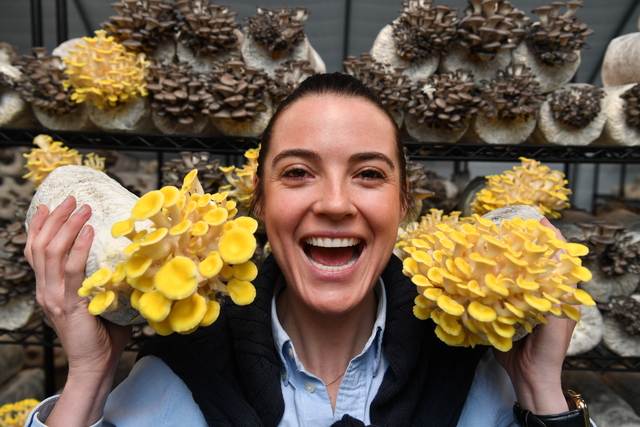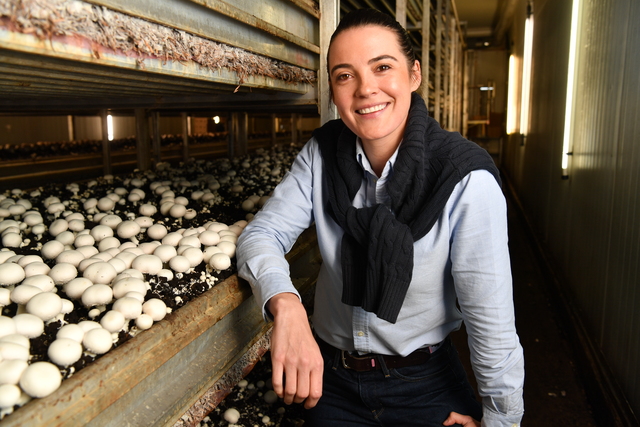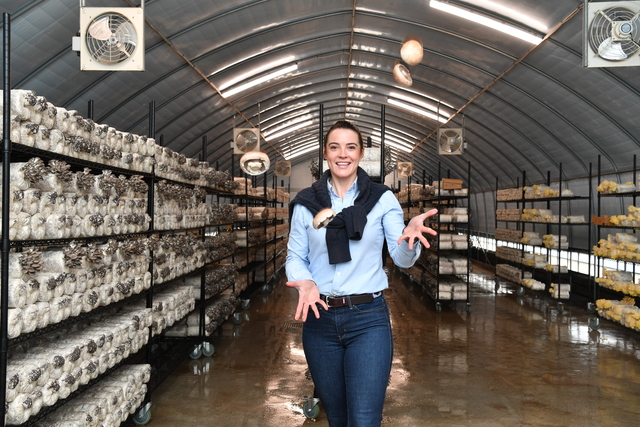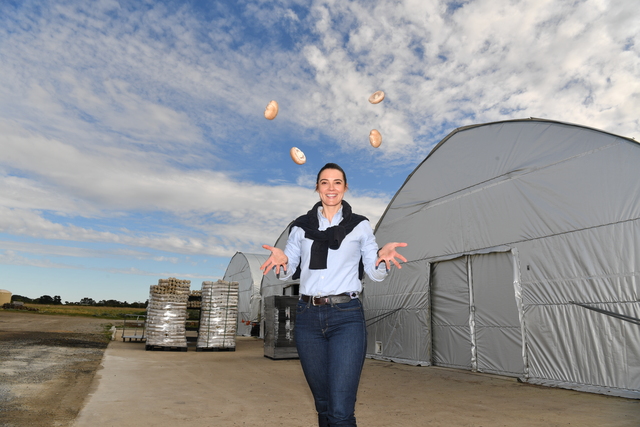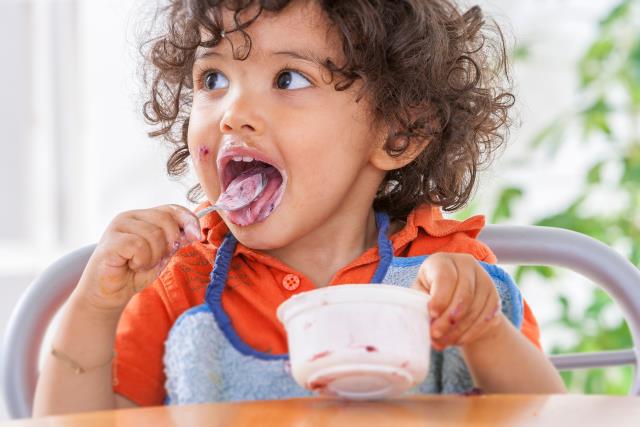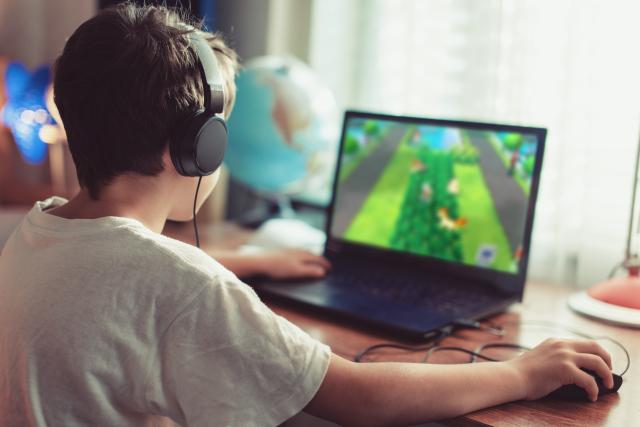Bulla Park in Diggers Rest is Australia’s largest organic mushroom farm and uses indoor vertical growing and artificial intelligence-informed farming practices. Oscar Parry spoke with Bulla Park chief executive Georgia Beattie about the future of indoor food production and the role of artificial intelligence at her farm.
Georgia Beattie said her decision to buy her farm was not just to learn how to grow food – but how to grow food indoors.
Bulla Park’s indoor mushroom facility is vertically-integrated, meaning mushrooms are grown in stacked layers.
The farm grows mushrooms for food and health purposes, with Coles recently providing it funding to produce an Australian-grown dehydrated range.
Georgia said that as indoor-grown produce is protected from outdoor climate-related threats, pests, and diseases, she believes supermarkets will become increasingly interested in partnering with indoor growers.
“If you have a look at the supermarkets, they’re wanting to make sure that they’ve always got a range of food on the shelves. So rather than have these dips if there’s a major flood in the area or a major drought and they’re unable to get products, I think that they’ll always have anywhere between 10–30 per cent of their [supply] base grown indoors – [where] they know that regardless of what’s happening, they’ll be able to draw down some products,” she said.
“The benefits of [growing] indoors is that we’re able to … control the environment.”
Georgia said while indoor-grown produce is pricier in the short term, she believes that as the indoor growing industry expands, costs to consumers will reduce.
She said the vertical farming techniques used by Bulla Park, and historically used for growing mushrooms, could be applied to a broad range of produce.
“There’s no reason why we wouldn’t set up similar farms in each state, close to high consumption areas, so that we can efficiently get nutrients to people,” she said.
“What I want to do is … deeply understand how to farm in Australia. So that’s from an asset perspective … and how we most efficiently are able to get products to shelves, [and] there’s also a people and training perspective.”
Georgia said that over 60 per cent of her staff have an IT background, proving useful in understanding and contributing to the company’s data focused approach to farming.
“They have that systems mentality of scaling products, and the benefit of growing indoors is that in any one minute, I’ve got thousands of data points … we’ve been recording these in the grow rooms for the last 30 years, but I’ve … added another 2000 data points since I’ve taken over the farm,” she said.
Using Google Gemini, a generative artificial intelligence chatbot, Georgia said the company is constantly using this data to analyse and experiment with growing conditions and practices.
“Staff are thinking in this way – they’re not going to do something unless we are capturing that data point. And then we need to think about how we are capturing it – where does it go? Where is it stored? How do we [access] it later? So that systems thinking is … really important going forward,” she said.
“It’s critical that agriculture starts to have this data and intelligence so that they’re building up this muscle. Because it does take time, and you’ve really got to invest in cleaning up the data, but it is going to be critical.”
Georgia said that she hopes to investigate education pipelines and how to increase interest in people with IT and robotic engineering skills in indoor food production.
“I think we’ve got a generation coming up that really cares about the environment, they want to align their careers with purpose.”
Victorian Farmers Federation vice president Danyel Cucinotta said artificial intelligence, along with other new technologies, are proving to be important tools for food producers.
“Artificial intelligence, or any technology for that matter, is vital for agriculture – whether that’s horticulture or any type of commodity … it’s all about becoming more efficient, more effective, about producing food through lower costs, lower emissions, better soil health … [it] will be part of the future and already is,” she said.
“Drones are being used to identify soil health, moisture levels, rainfall, and [capture data] … traditional farming is across acres and acres of farmland … so [farmers are] using drones to capture a much larger look at their farms and the way that they’re working.”

